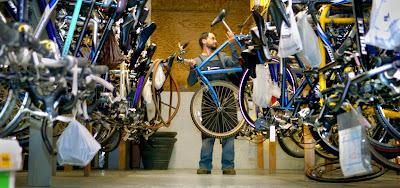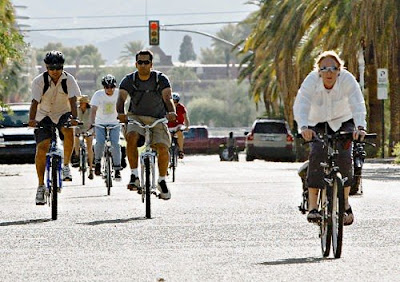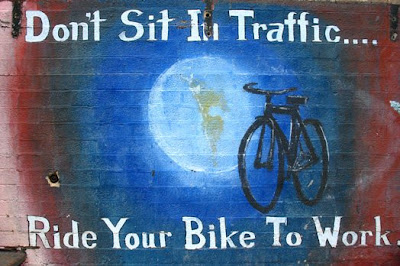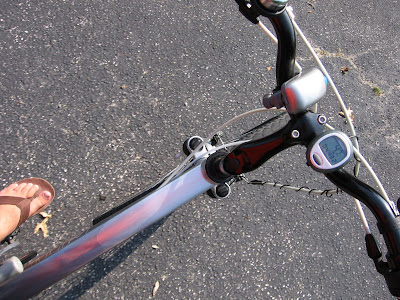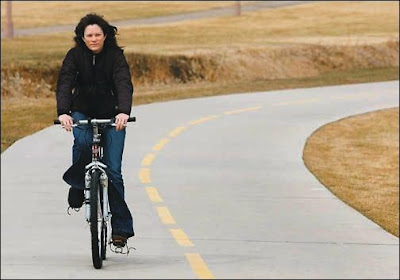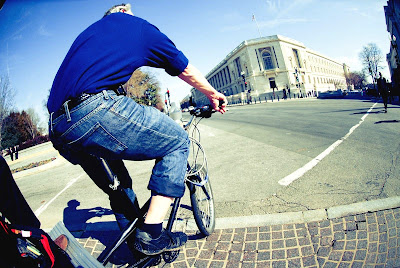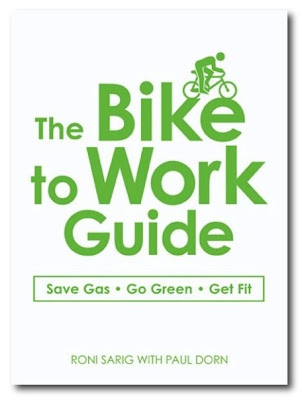
From the New Haven Independent, 03.25.08:
Bikes on Trains? ConnDOT and Commuter Council Say NoBike Commute Tips Blog reader Mark Abraham forwarded information about this fight in Connecticut, trying to gain better bicycling access on one of the busiest commuter routes in the U.S. Presently, bikes are allowed on-board only during off-peak hours; such as this ridiculous sitation in the image above. Compare this chaos on Metro North, with a system like Caltrain's dedicated bike cars on every train or, better, the Amtrak Capitol Corridor. (Better, IMHO, because it disperses cyclists in small numbers throughout the multi-car train, rather than causing them to crowd in and crawl over each other in a single dedicated bike car.)
Members of Elm City Cycling, Connecticut Bicycle Coalition and other supporters of making room for bikes on the new Metro North train cars in the interest of multi-modal transportation were dealt a serious blow when the Connecticut Rail Commuter Council voted on March 19 against a resolution that asked Metro-North and Connecticut DOT to provide bicycle parking on New Haven Line cars.
Bicyclists were a strong presence at a recent Metro North President's Forum:
A half-dozen New Haveners joined a group of cyclists on a train ride from New Haven to Grand Central Station Wednesday to promote their cause before the president of Metro North Railroad. He insisted it's a zero-sum game--i.e., more bike access means fewer seats for passengers.One of the problems seems to be conflicting information from the Connecticut DOT, which first indicated that additional bike space would be provided on the system's new cars. Then it seemed that added capacity wouldn't materialize.
So the cyclists vowed to take their fight to the governor and the Connecticut General Assembly. New Canaan resident (Richard Stowe) is a devoted cyclist and promoter of linking cyclists to mass transit. He’s been beating the drum, asking Metro North to create "safe, secure bicycle parking" on the new M8 cars the railroad has ordered.
CT bikers are writing letters, reaching out to media, packing hearings, making noise. They will succeed. I'm a daily multimodal commuter, and wish great success to cyclists in Connecticut. (And until victory, they might want to consider a folding bike.)
Abraham also reports that New Haven registers a respectable--by U.S. standards--1.8 percent mode share for bike trips. He also sent a link to an interesting article on the Elm City's role in bicycling history.
Image: Five Borough Bicycle Club. Bikes on Metro-North car.
Visit: Metro-North unveils bike rack ideas, The Advocate (Stamford, CT)
Visit: Study: Bikes will get to ride on trains, The Advocate (Stamford, CT)
Visit: Cyclists fight for space on trains, New Haven Independent
Visit: The facts about bikes on trains, Darien Times
Visit: Connecticut bike commuters on TV, Bike Commute Tips Blog
Visit: Paul Dorn's Bike Commuting Tips Site


